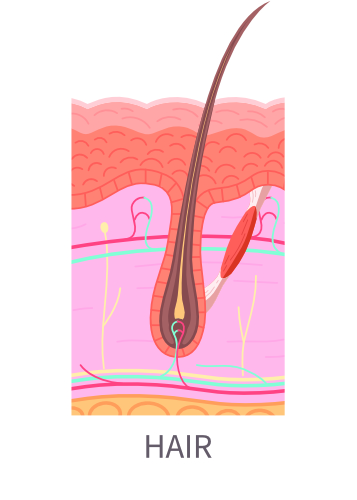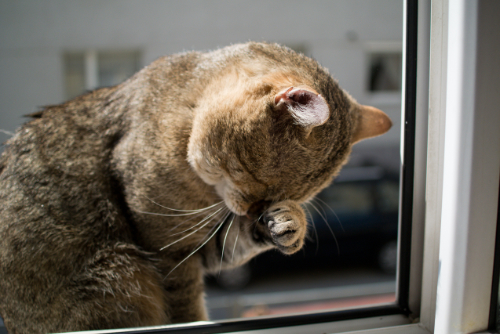What causes a bald nose in cats?
A bald skin on a cat’s nose can be caused by either no or reduced hair production, or because the existing hairs break off. In the first case the skin is completely smooth, in the second case you usually still see a few stubble. A poor production of hair can be caused by the hair follicles being destroyed. This can be caused by a parasite, a fungus or because your cat’s own body has destroyed the hair follicles. But in most cases, the hairs break off because the cat is itchy and excessively washes itself or because of a fungus (yes, that was also mentioned in the other case).

What happens with a bald nose due to a destroyed hair follicle?
The hair follicle is the “dent” in the skin from which a hair grows. At the bottom of the hair follicle, the hair is produced and pushed outward. If this production no longer goes well, hair growth will stop and the hair will fall out. This is a normal process during a shedding period. But when all the hair on the nose suddenly starts to fall out, something is wrong with the hair follicles on your cat’s bald nose.
Parasites
Actually, there is only one parasite that can live in the hair follicles of the cat and that is the cause of a bald nose in the cat. This is a mite that we call Demodex cati. In most cases, the cat also suffers from bald ears and bald cheeks. You can combat this mite with the Mange relief for cats.
skin fungus
A skin fungus grows in both the skin cells and the hair when a cat has become infected with it. This can therefore cause damage to the hair follicle, resulting in hair loss. But hairs can also break off because the fungus has made the hair less strong. In most cases you can also see that the skin itself is somewhat different. A little flaky skin on your cat’s nose, for example, sometimes even with some scabs as a result. If the bald spot is small you can use a miconazol treatment. If your cat has a large spot on his nose you’d better contact your veterinarian.
autoimmune disorder
When your cat’s body itself attacks and destroys the hair follicles, baldness can occur. However, this is quite rare in the cat. Your vet will be able to determine this after taking a piece of skin from your cat’s bald nose during anesthesia. This piece of skin is then sent to the laboratory and they will diagnose this disorder.

A bald nose due to breaking hair
When mechanical forces are applied to a hair, the strength of a hair deteriorates considerably. After too much mechanical force, a hair will break off. In that case you will see a bald spot on the nose. Mechanical forces are, for example, excessive rubbing of a paw over the nose if a cat washes itself too much. Or when a cat is really itchy, it will scratch its nose with its hind legs or rub its head against objects. In all cases, the hair on the cat’s nose will be damaged, resulting in a bald spot.
Skin fungus
Itch
If a cat has an itchy nose in any way, it may start washing it excessively or rubbing against objects. Yet it is rarely the case that a cat is only itchy on the bridge of its nose. Almost always there are more parts of the cat that have become bald. For example, read more on the page about bald ears. But there is also a page about bald lips in cats. In any case, itching on the head is in the vast majority of cases caused by an allergic reaction. And in particular the food allergy or the atopic allergic reaction, where there is an allergic reaction to, for example, pollen, house dust mites, etc.
Treatment of baldness in cats
If your cat has a bald nose and you do not see any other complaints such as itching or broken skin, you can first give your cat an anti-parasitic agent such as Mange relief for cats.
If this doesn’t help your cat in any way, you can try a hydrocortisone ointment. This will stop any inflammation of the hair follicles. Apply this ointment twice a day for about 7 days. By then you should be able to see some hairs start to grow back.
If this does not have the desired result, you can try whether a foot fungus ointment for humans solves your cat’s bald nose. In that case, you should apply this ointment thinly to your cat’s nose twice a day for at least 4 weeks. You should see small hairs start to grow back after a week.
If this does not help either, it is wise to ask your vet for advice. He can then, for example, take a scraping of the nasal bridge skin and look at it under the microscope in the hope of finding a cause for the baldness. In some cases, the vet will suggest removing a small piece of skin under anesthesia and sending it for examination to a laboratory.
Good luck!
Hopefully your cat will no longer suffer from a bald nose after the treatment you’ll give him. Good luck!



